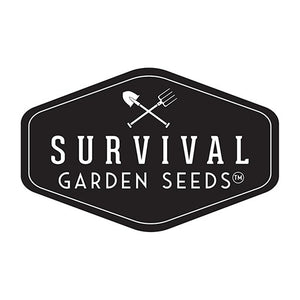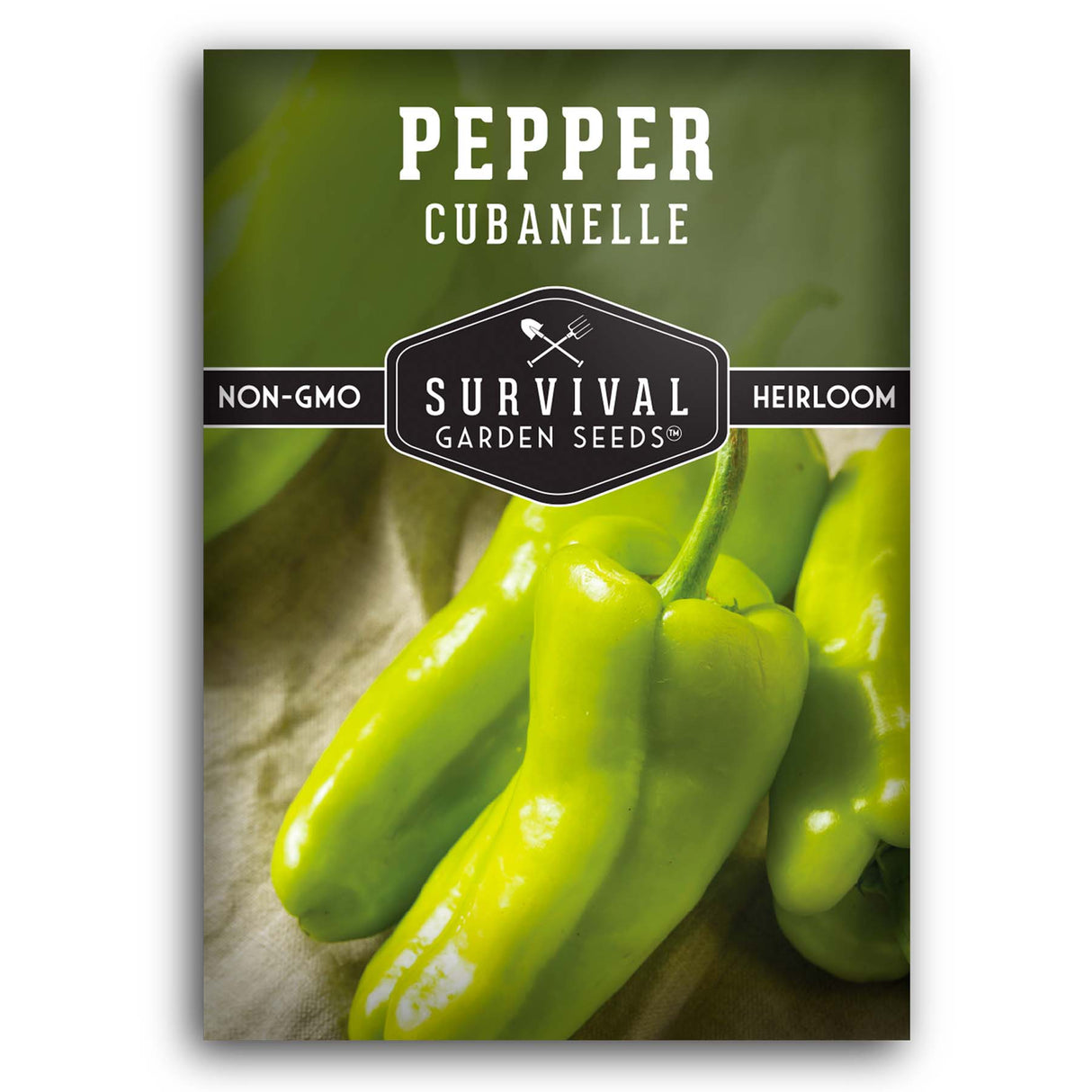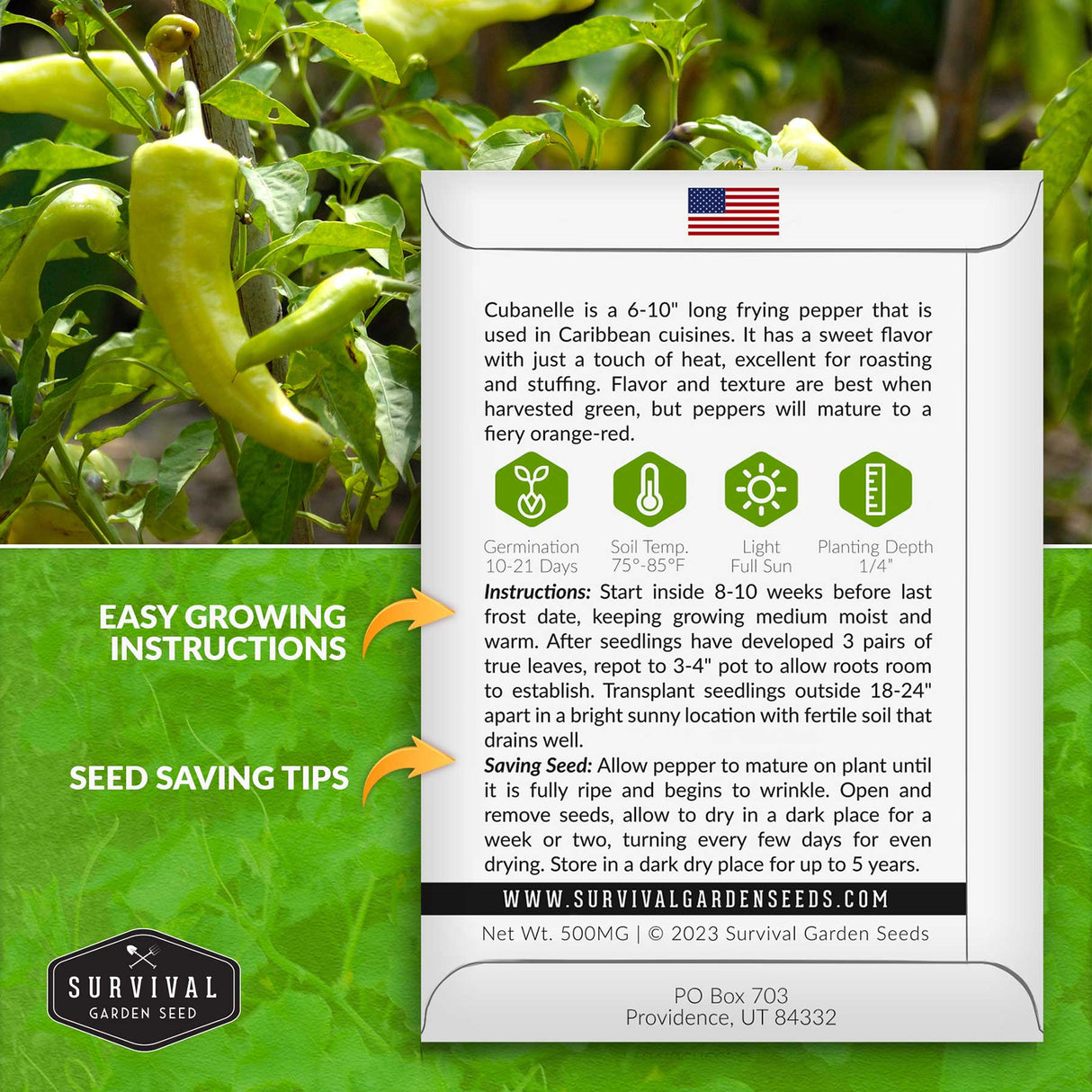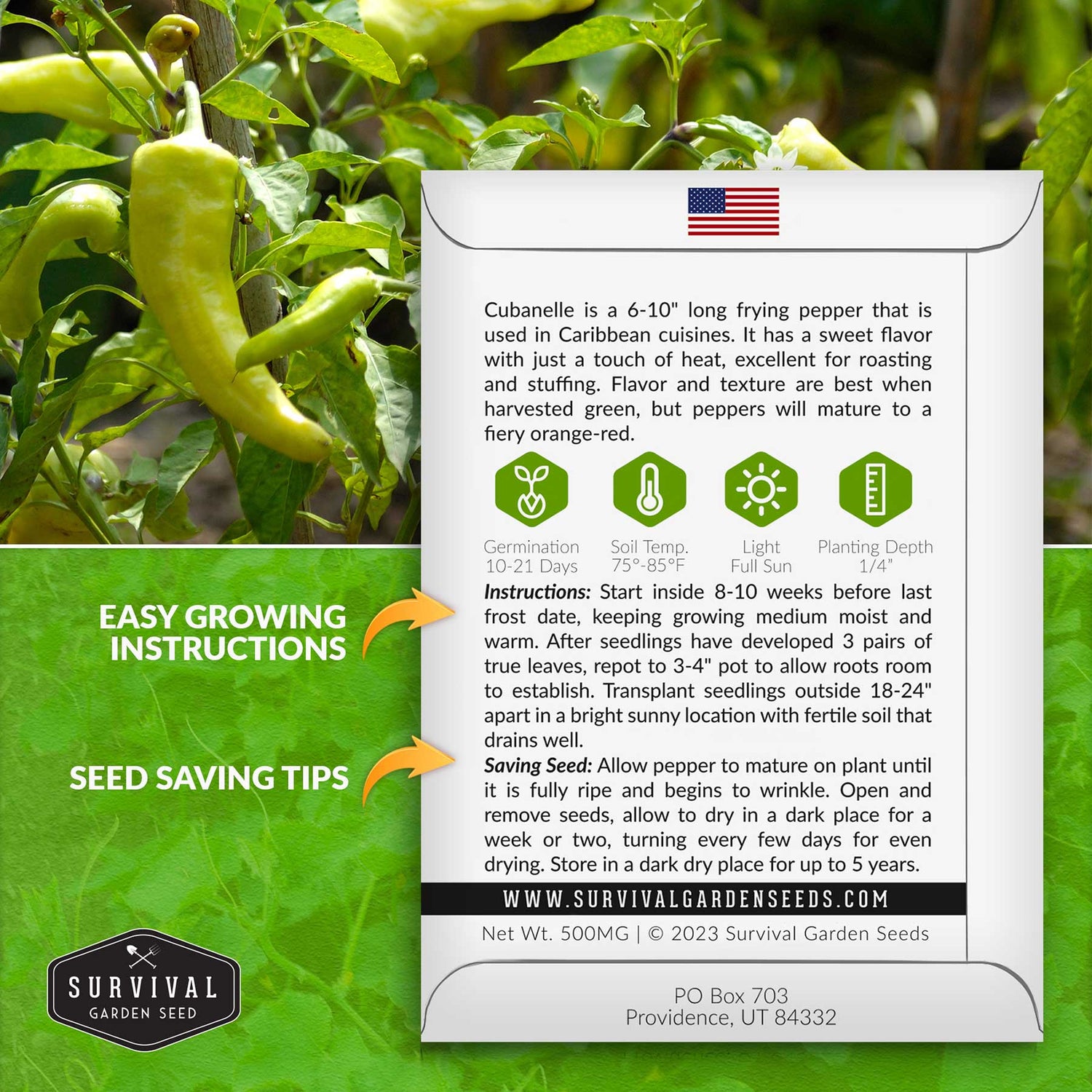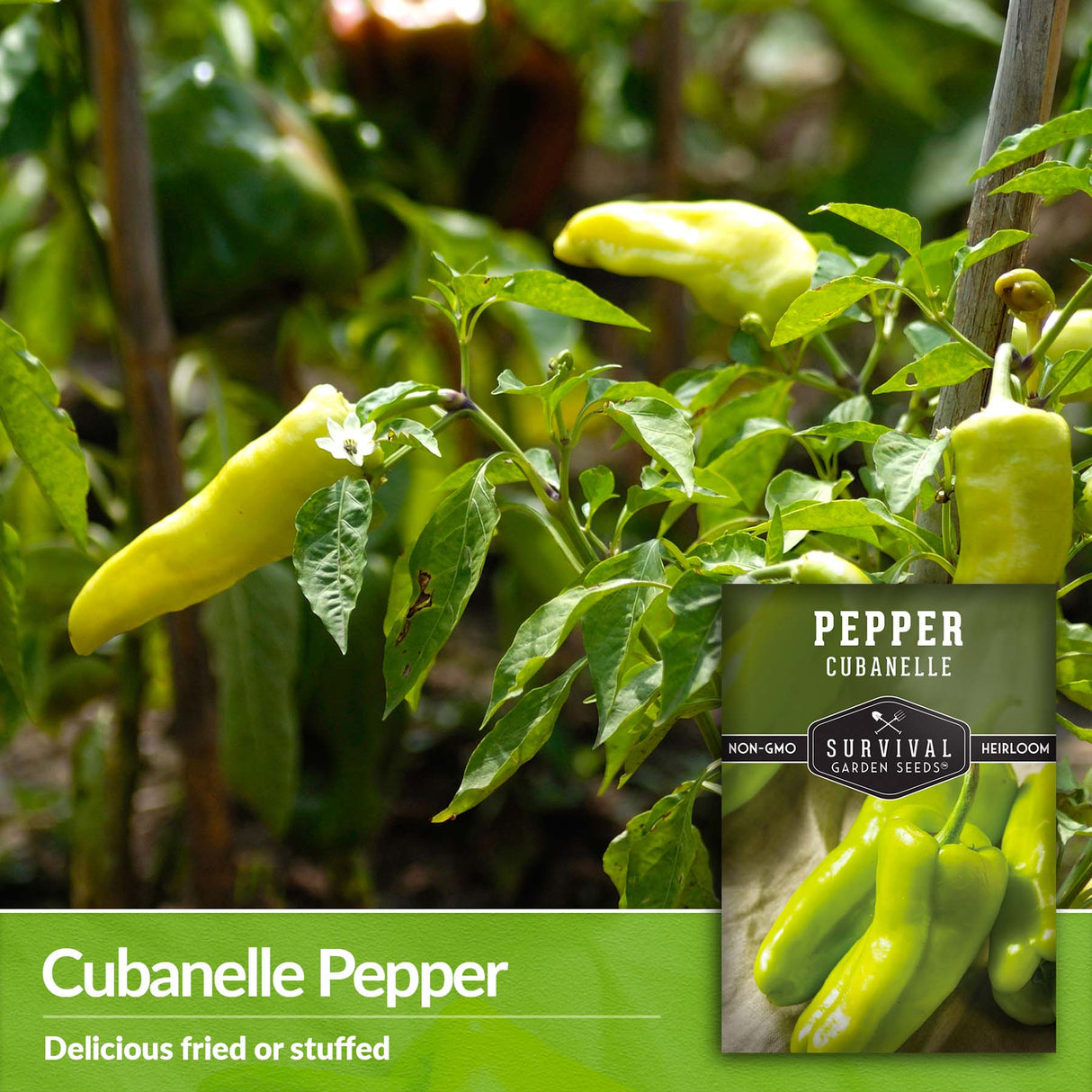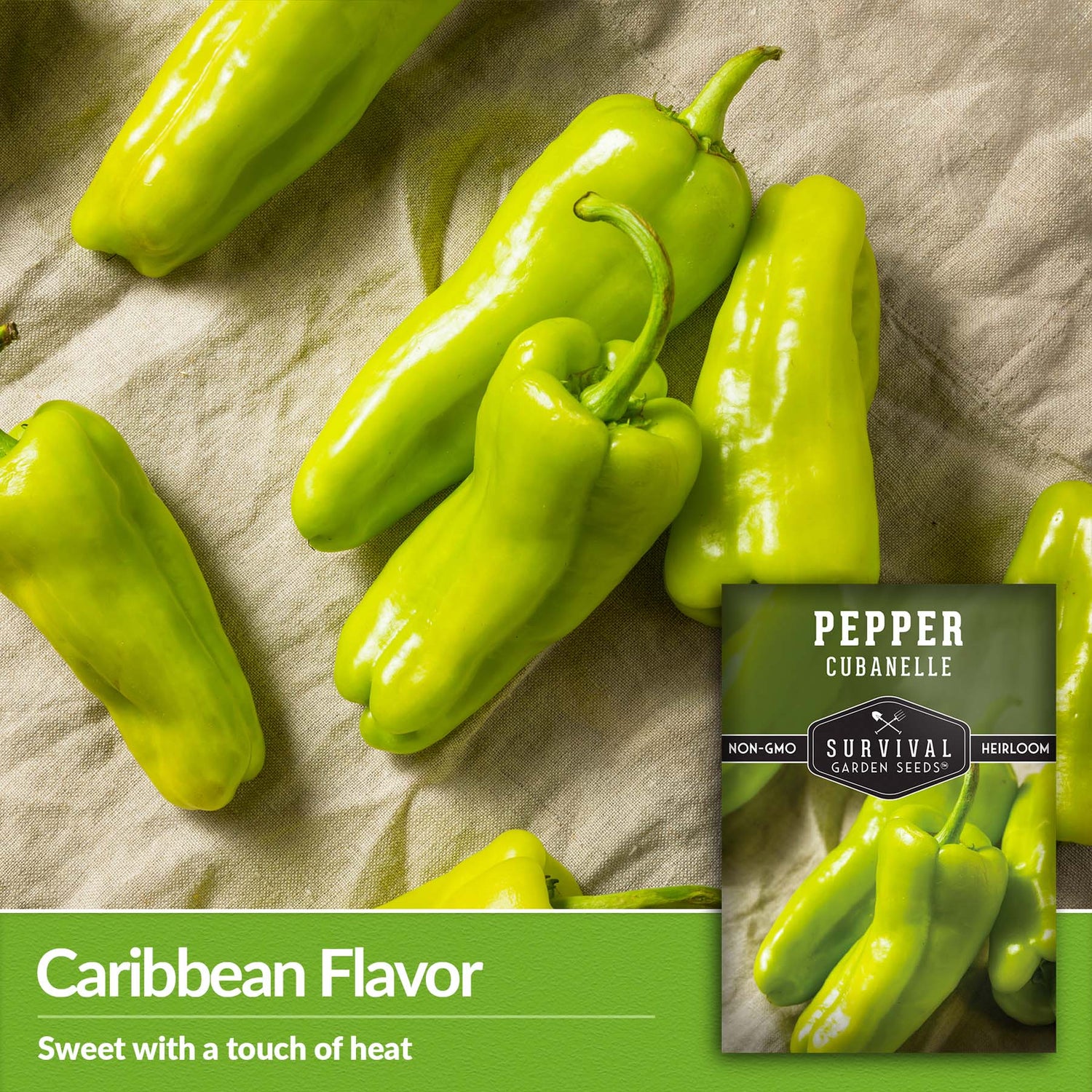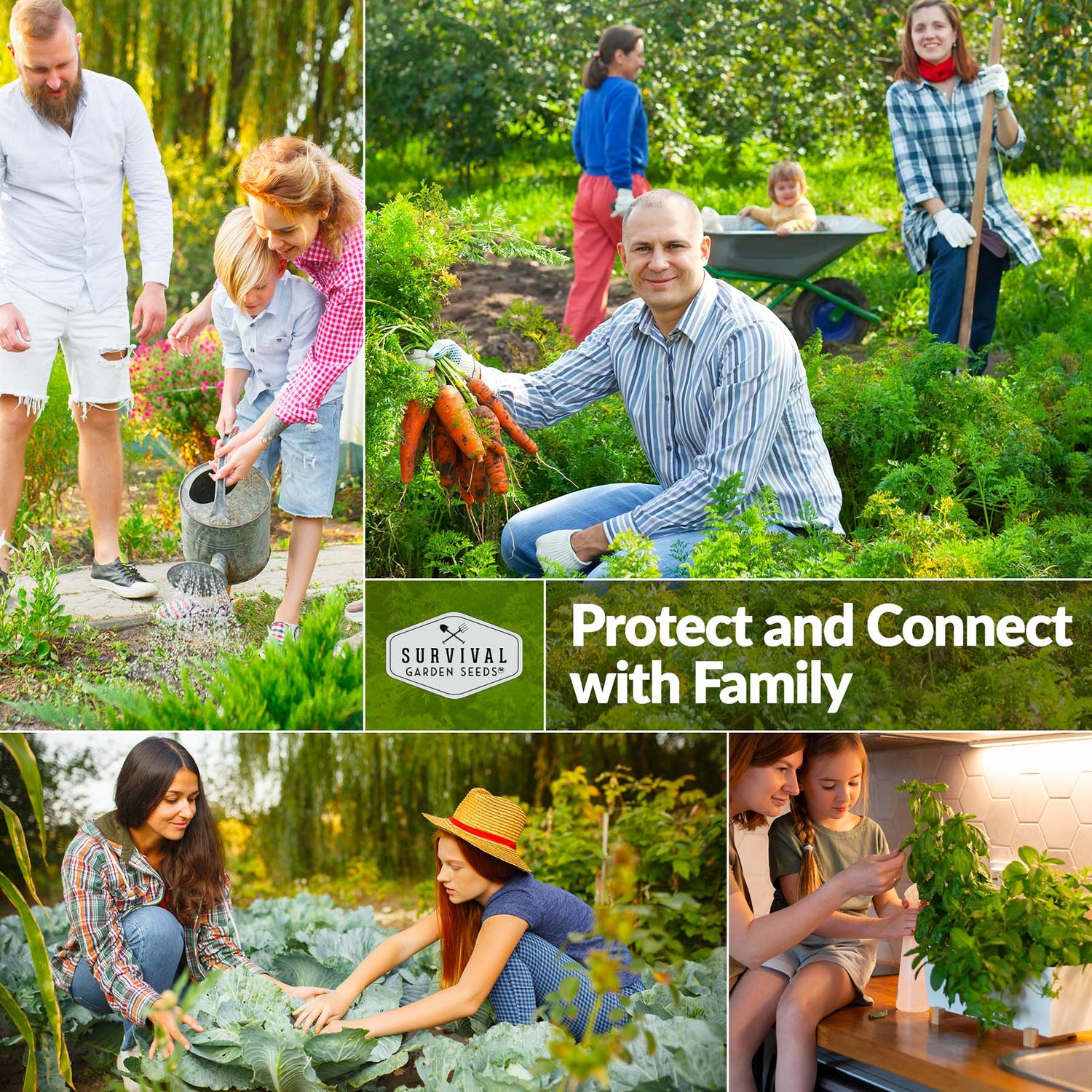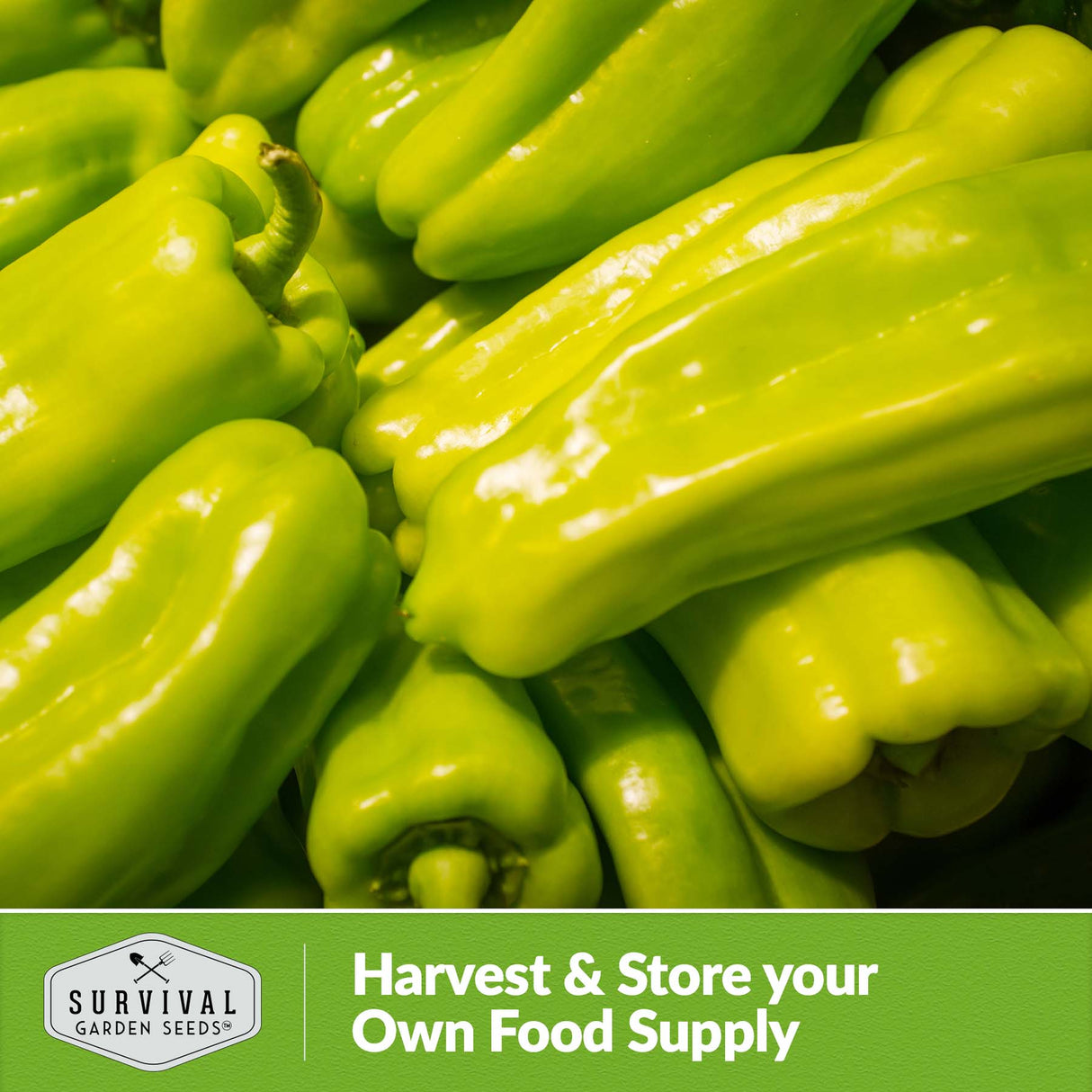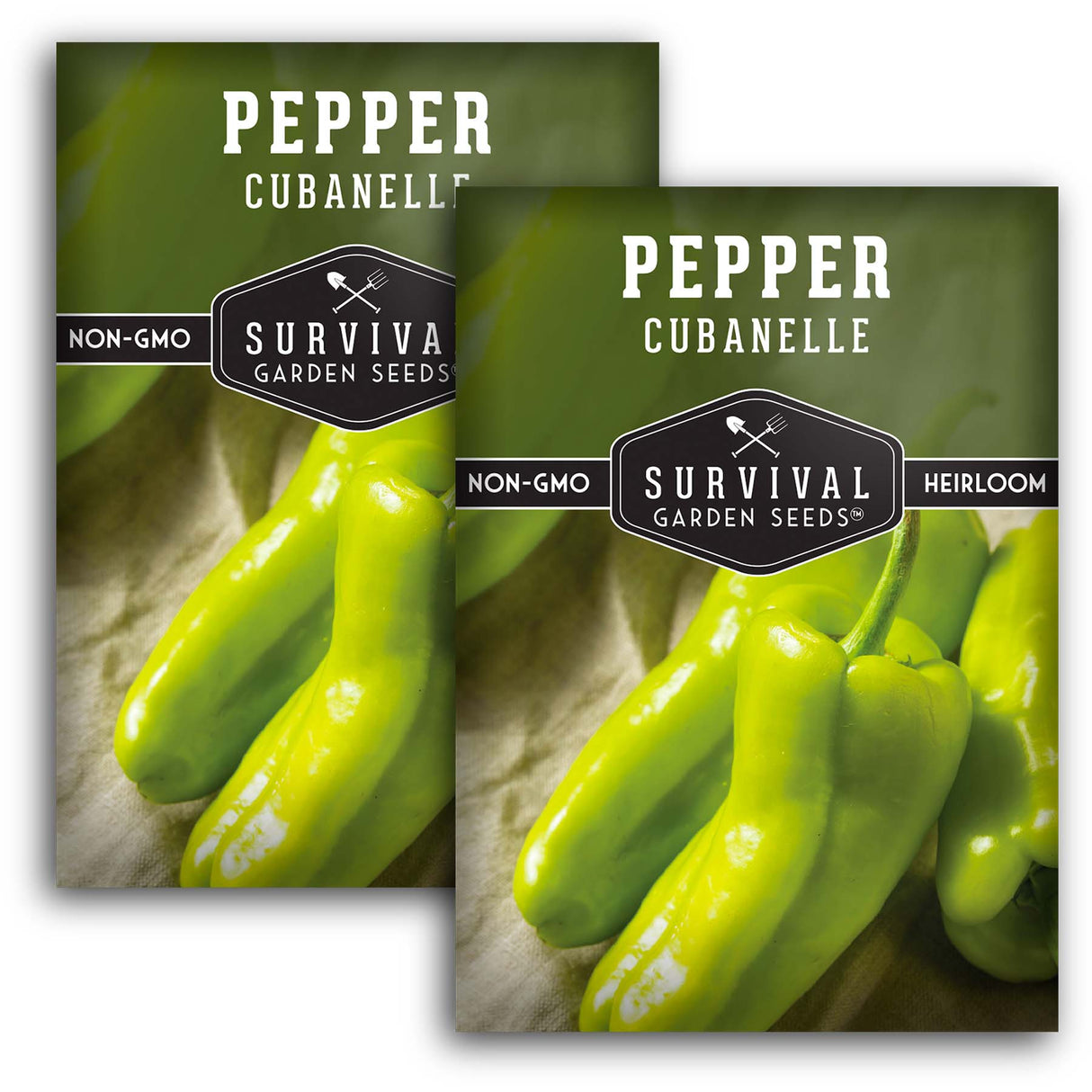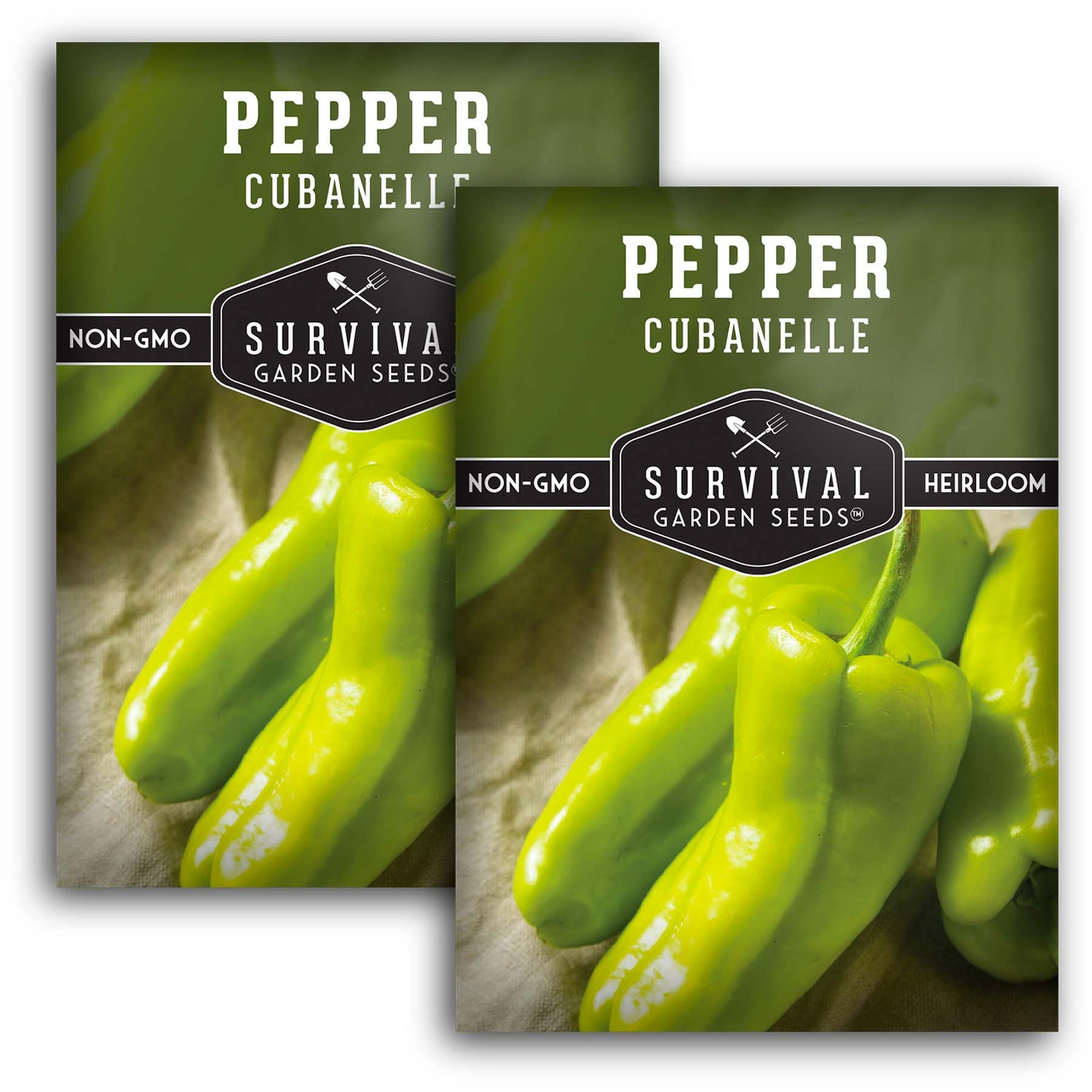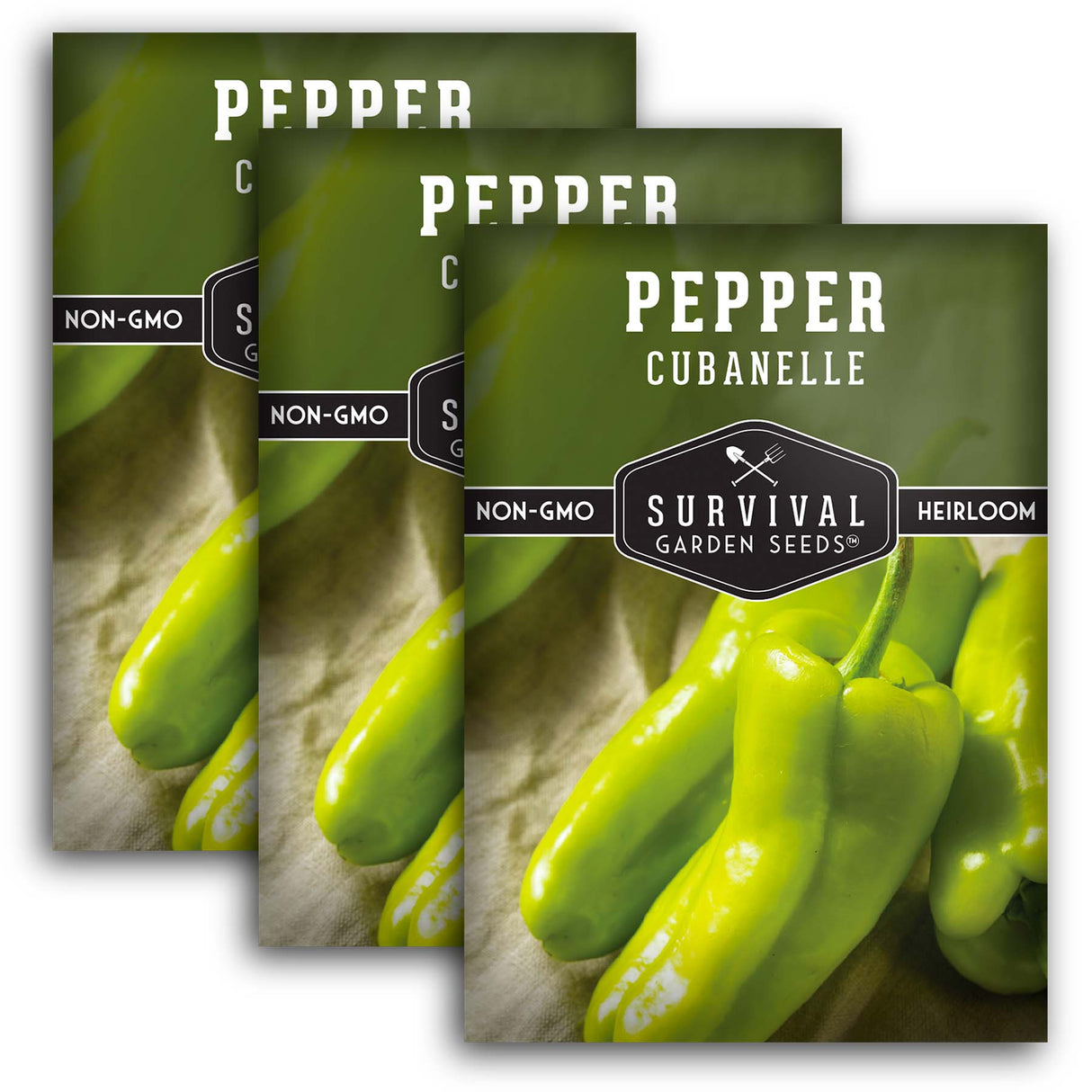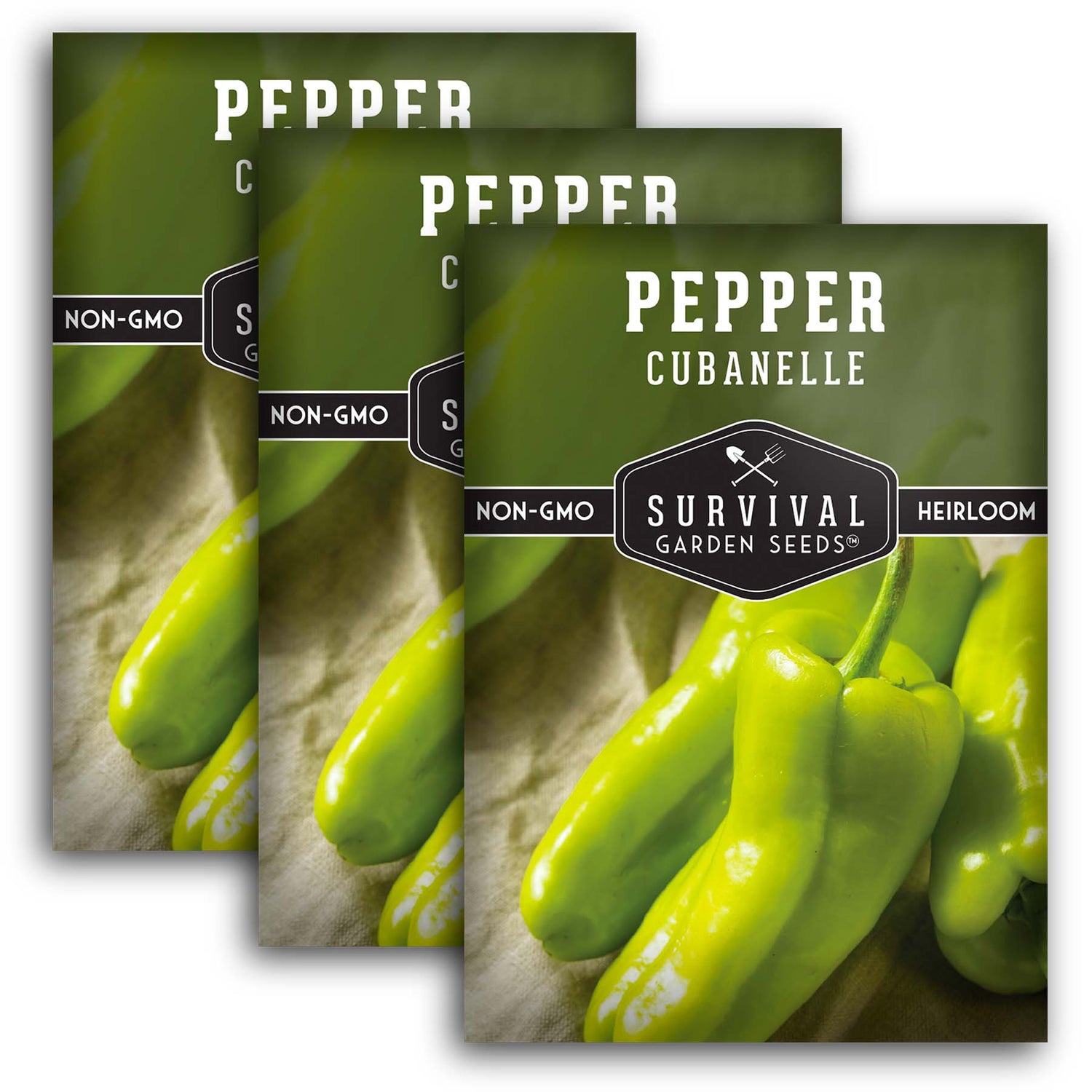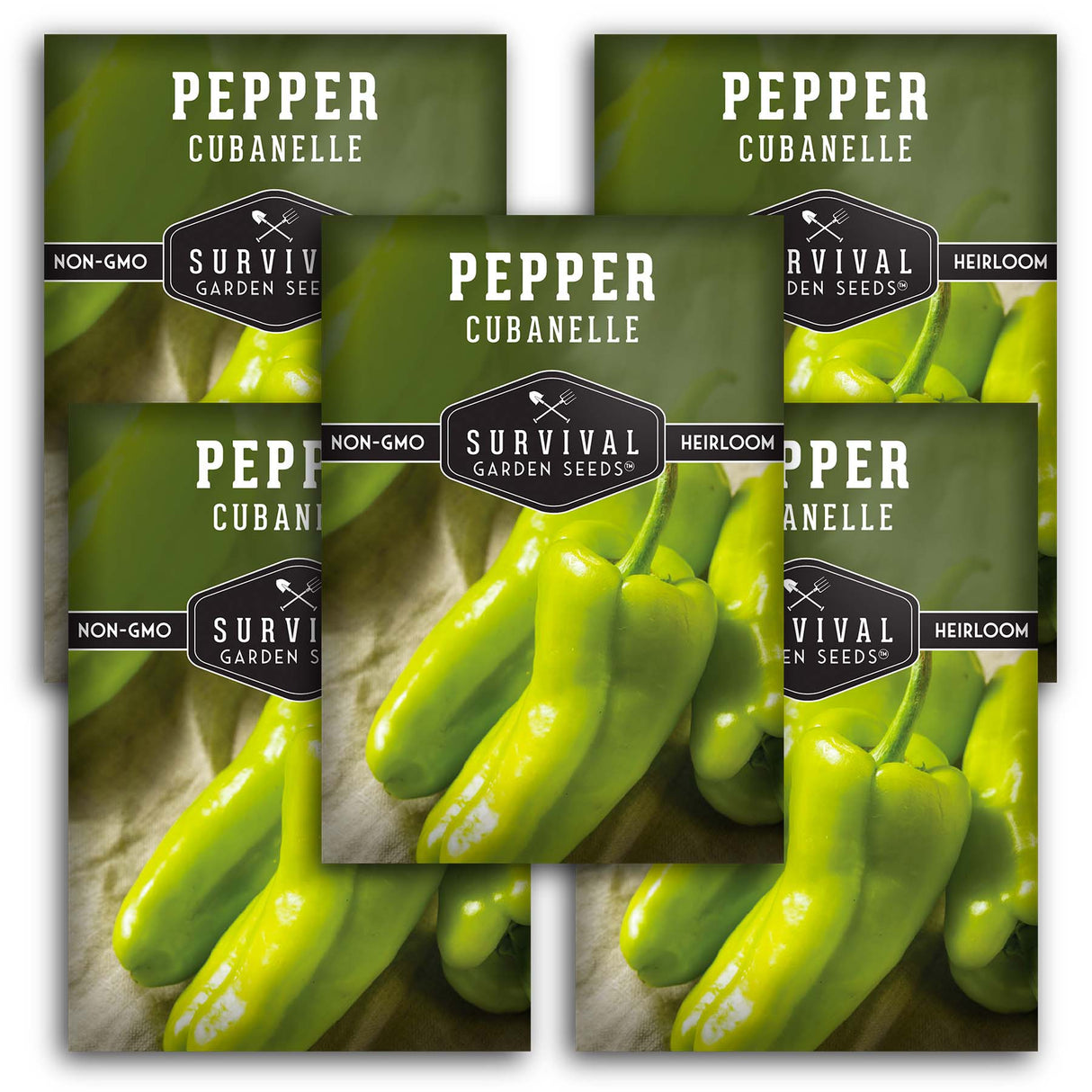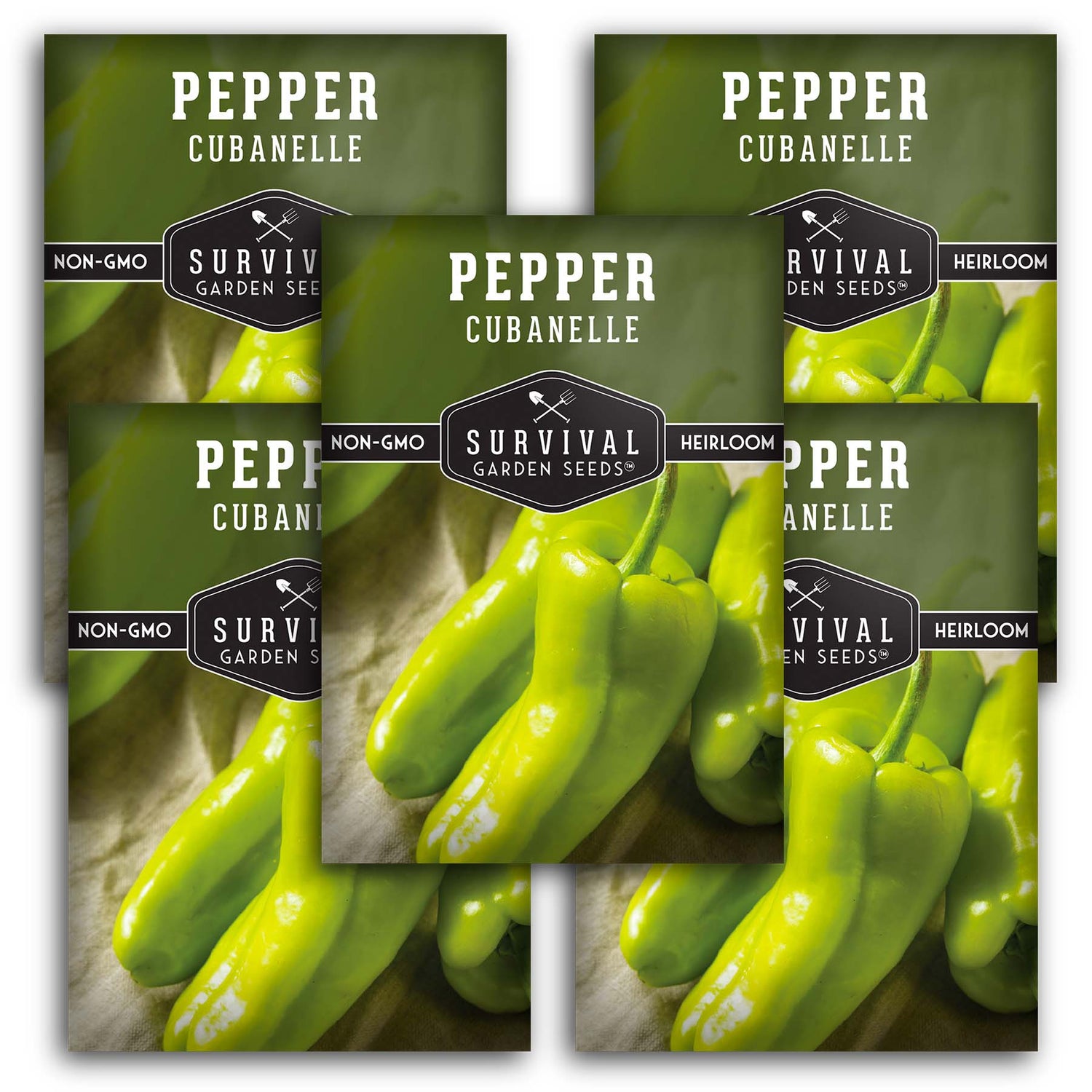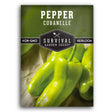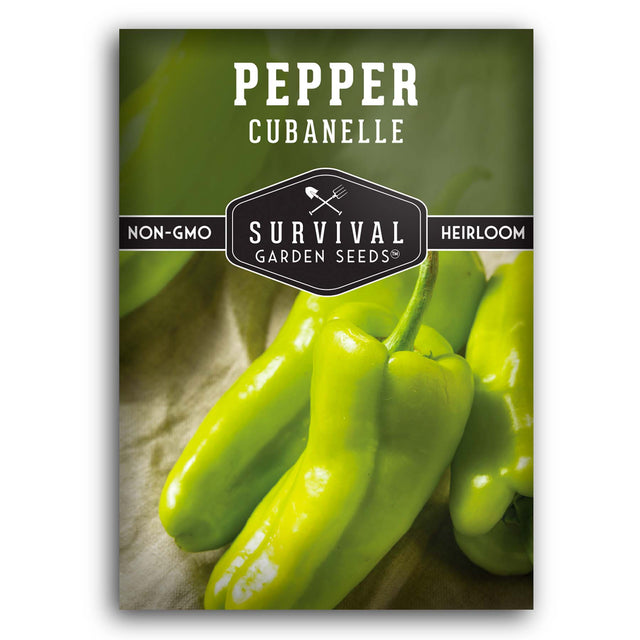Cubanelle Pepper Seeds – Heirloom Non-GMO Sweet Italian Frying Peppers for Mild, Flavorful Cooking
Heirloom - Non-GMO - Reliable Germination
Cubanelle Pepper Seeds – Heirloom Non-GMO Sweet Italian Frying Peppers for Mild, Flavorful Cooking - 1 Packet is backordered and will ship as soon as it is back in stock.
Grow flavorful, versatile peppers with Cubanelle Pepper Seeds, a classic heirloom Capsicum annuum variety prized for its mild, sweet flavor and thin-walled, crisp texture. These 3–6 inch, pale green peppers are a staple in Italian, Caribbean, and Mediterranean cooking, perfect for sautéing, frying, stuffing, or slicing fresh into salads.
Compact 24–30 inch plants thrive in full sun and well-drained soil, producing generous harvests in about 70 days from transplant. Whether grown in raised beds, containers, or traditional garden rows, Cubanelle peppers deliver dependable yields and a light, pleasant sweetness that suits family meals and everyday recipes.
This open-pollinated heirloom is non-GMO, untreated, and selected for reliable germination and garden performance. Once established, plants show moderate drought tolerance and steady fruit set throughout the season.
Sweet, Versatile, and Productive:
- Long, slender 3–6 inch fruits with mild, sweet flavor
- Ideal for frying, sautéing, or stuffing
- Thrives in full sun; grows 24–30 inches tall
- Matures in about 70 days from transplant
- Excellent for Italian, Latin, and Caribbean dishes
Why Gardeners Love Cubanelle Peppers:
- Heirloom, open-pollinated, and non-GMO
- High-yielding plants suited for containers or garden beds
- Thin walls cook quickly—perfect for pan-frying or roasting
- Reliable performance in USDA zones 4–10
How to Grow:
- Start seeds indoors 6–8 weeks before the last frost date.
- Maintain soil temperatures around 75–85°F for best germination (10–14 days).
- Transplant outdoors after frost risk passes, spacing plants 18 inches apart.
- Grow in full sun with consistent moisture during early growth.
- Harvest peppers about 70 days after transplant, when fruits reach pale green maturity.
Harvest & Use:
Pick Cubanelle peppers when light green for mild flavor or allow them to deepen in color for a touch more sweetness. Use fresh in salads, sautéed in olive oil, or stuffed with cheese, grains, or meats for flavorful, classic dishes.
Net Wt. 500MG
Heirloom Vegetable Seeds
All of our seeds are open-pollinated, non-GMO, heirloom varieties with tested germination rates
Specifications
Specifications
-
Botanical Name
-
Planting Zones
-
Light
-
Soil Temp for Germination
-
Germination Time
-
Planting Depth
-
Plant Size
-
Days to Harvest
-
Growing Instructions
-
Seed Saving Instructions
-
Seed Count (approximate)
Payment & Security
Your payment information is processed securely. We do not store credit card details nor have access to your credit card information.
Why Choose Survival Garden Seeds
At Survival Garden Seeds, we believe in preparing today for tomorrow’s peace of mind. That’s why we offer only heirloom, non-GMO, and untreated seeds you can trust to nourish your family and support a sustainable lifestyle. As a family-owned American company, we’re committed to providing seeds that grow strong and true—helping you cultivate health, resilience, and beauty in your garden.
Frequently Asked Questions
Are your seeds heirloom and open-pollinated?
Are your seeds heirloom and open-pollinated?
Yes. All of our seeds are heirloom, open-pollinated varieties, which means they can produce seeds that grow true to type and are suitable for seed saving.
You can learn more about open-pollinated, heirloom, and non-GMO seeds in our Survival Garden Training blog.
Are your seeds non-GMO?
Are your seeds non-GMO?
Yes. All Survival Garden Seeds are 100% non-GMO. Our seeds are open-pollinated heirloom varieties and are never genetically modified.
Are your seeds treated with chemicals?
Are your seeds treated with chemicals?
No. Our seeds are completely untreated and free from chemical coatings, fungicides, or synthetic treatments.
How do I know my seeds are fresh?
How do I know my seeds are fresh?
Every seed packet includes a packed-for date, and we germination-test each seed lot before packaging to ensure high viability.
What is the shelf life of your seeds?
What is the shelf life of your seeds?
Most seeds remain viable for 3 to 5 years or longer when stored properly in a cool, dry place away from light and moisture.
In what USDA hardiness zones can I grow your seeds?
In what USDA hardiness zones can I grow your seeds?
Our varieties are selected to grow successfully across USDA Hardiness Zones 3 through 10. Each packet includes variety-specific planting guidance and germination tips.
